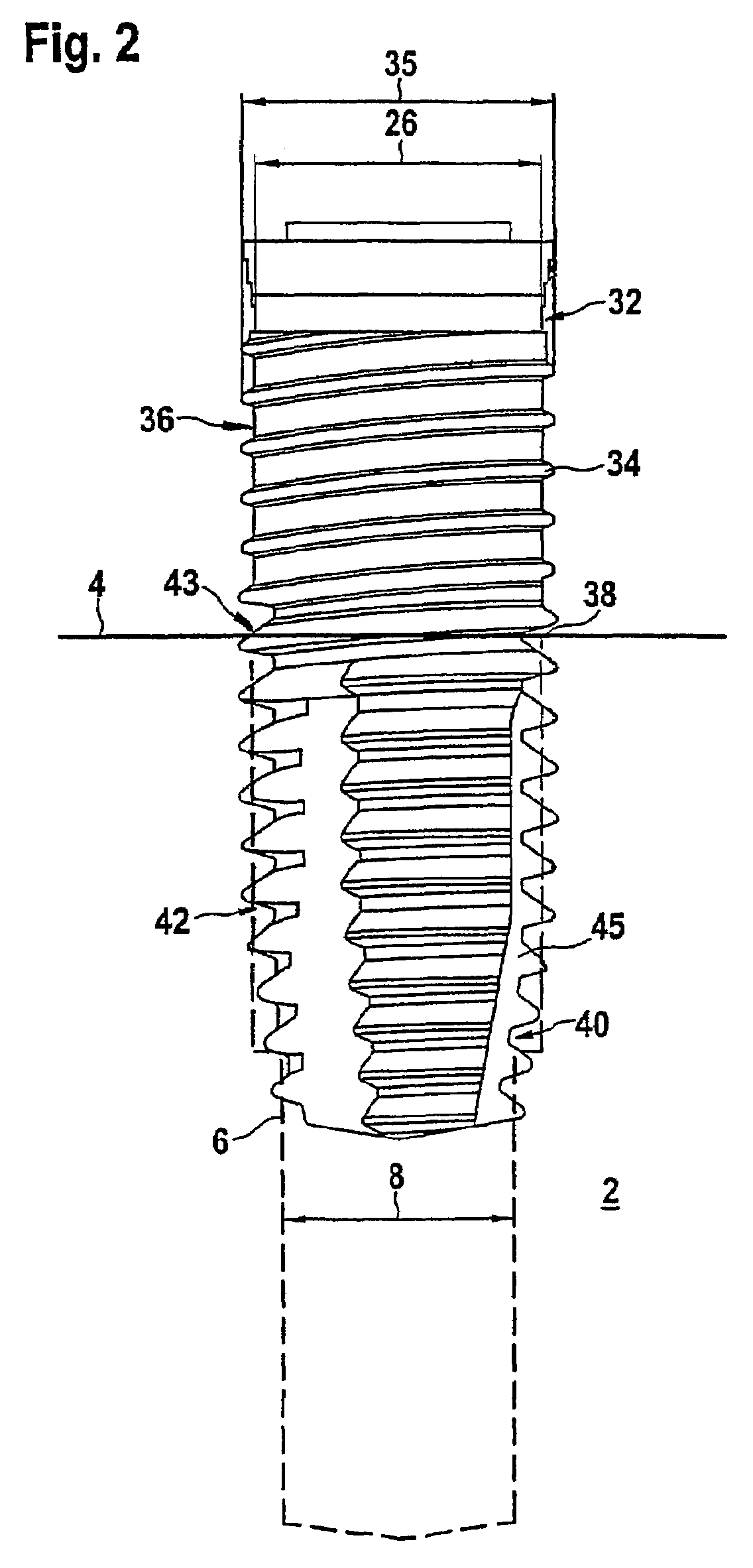Implant system
a technology of implants and systems, applied in the field of implants, to achieve the effect of maximum, primary stability of implants, and highest possible primary stability in all bone qualities
- Summary
- Abstract
- Description
- Claims
- Application Information
AI Technical Summary
Benefits of technology
Problems solved by technology
Method used
Image
Examples
Embodiment Construction
[0019]FIG. 1 diagrammatically shows a section through a bone 2 with an upper edge 4, in which a primary borehole 6 or a first drilling region, indicated by broken lines, is introduced by a primary drill 5. The primary drill 5, which is also shown by broken lines, contains a shaft, which can be inserted in a known manner in a drilling device. The primary borehole 6 or the first drilling region has a diameter 8 and a length 9, which is at least equal to the length of the implant, which is not shown here. Outside of the bone 2 or above the upper edge 4, the drill 5 has a stop or a radial expansion 10 and at least one marking 11, which form means for specifying the depth, of primary borehole 6. Furthermore, especially below the expansion 10, stop means can be provided for specifying or limiting the depth of introduction. Accordingly, boreholes, which are longer or deeper than the length 9 shown, can also be introduced with the same primary drill 5.
[0020]The primary drill 5 or the primar...
PUM
 Login to View More
Login to View More Abstract
Description
Claims
Application Information
 Login to View More
Login to View More - R&D
- Intellectual Property
- Life Sciences
- Materials
- Tech Scout
- Unparalleled Data Quality
- Higher Quality Content
- 60% Fewer Hallucinations
Browse by: Latest US Patents, China's latest patents, Technical Efficacy Thesaurus, Application Domain, Technology Topic, Popular Technical Reports.
© 2025 PatSnap. All rights reserved.Legal|Privacy policy|Modern Slavery Act Transparency Statement|Sitemap|About US| Contact US: help@patsnap.com



